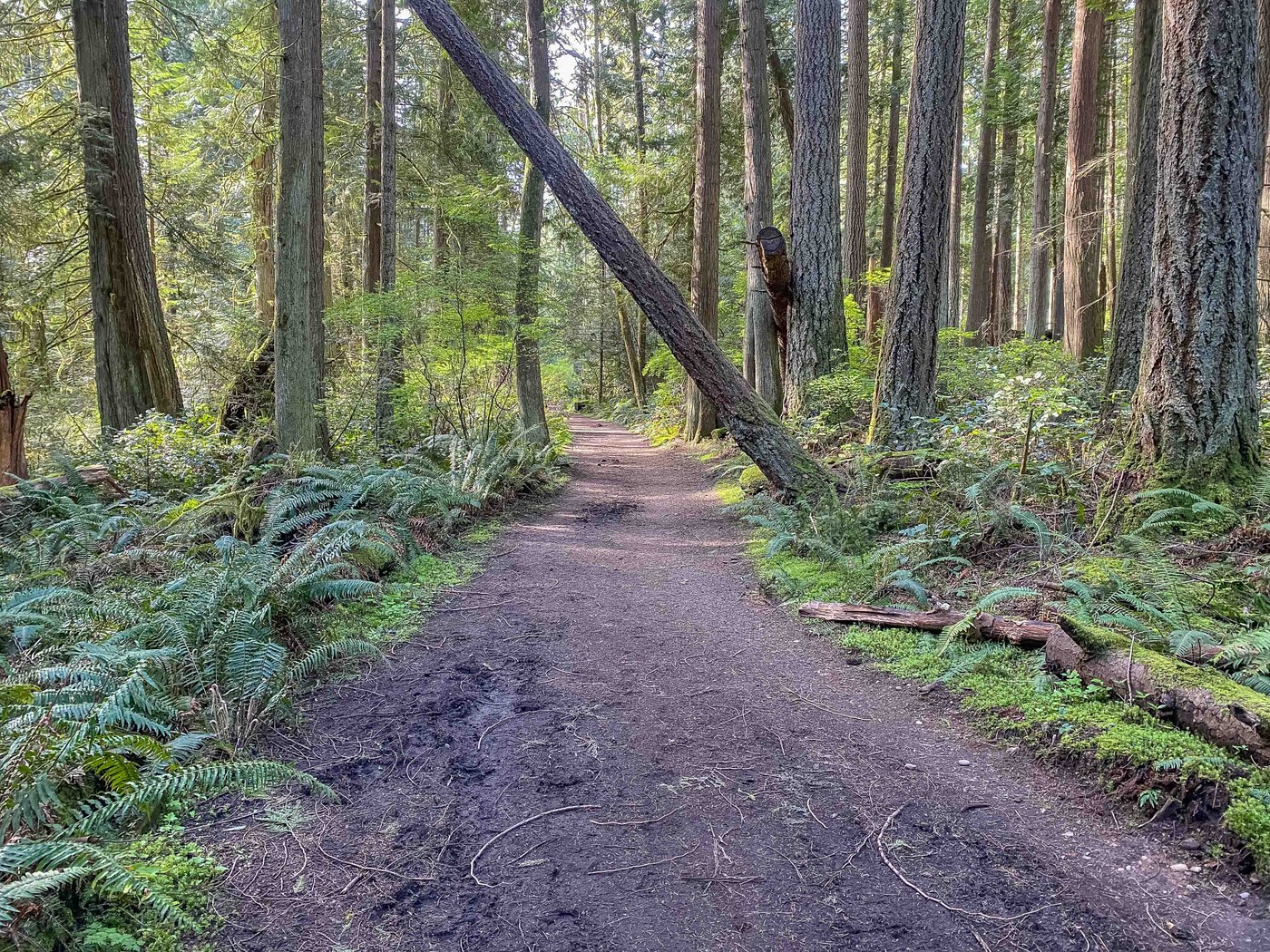I arrived at 6:20 a.m. this morning to avoid heavy rush-hour traffic and scout out the best places for sensory immersion. The restrooms were closed as was the gate to the parking lot. Fortunately, there was an open Portapotty in the parking lot, so once we got all our cars officially into the parking lot (gate opened at 7:22), we were good to go.
The trails are a bit damp, but otherwise the Raven and Trillium trails are in great shape, with nothing impassable. There was some horse manure in spots, but we skirted all the piles without incident. A relatively quiet morning, which was my intention by choosing a 7:15 start. By 10:45 when we were finishing up our 5.3 mile loop / 3+ hours, a group of 5 dog walkers with 6-8 dogs each (well-behaved, and of all species) made their way back to the parking lot. That's a lotta dogs!!
The traffic noise (well, that and horse poop) is about the only downside to this pretty urban park, but I'll definitely return. Fun birds and great people. Call ahead to find out about gate openings; there is roadside parking, but the person who opened the gate suggested we move cars into the lot to avoid smash-and-grabs on the highway. Portapotty delivery was also postponed due to the late gate opening.
This was a fabulous group of 11 Mountaineers, many of whom had never visited Bridle Trails State Park before. We had a great mixture of experienced birders and complete novices, and one member was on her first-ever Mountaineers trip. We birded the Raven trail from 7:30-8:50 and then enjoyed some lovely moments on the Trillium trail away from the noise of I-405. I strongly recommend going directly to either the Coyote or Trillium Trail (counter-clockwise) if you want to focus on birdsong.
Highlights included bleeding hearts, trillium (pollinated and not), False Lily of the Valley, Siberian miner's lettuce, "stinky Bob" and some chorus frogs. Bird species moments included good looks at Cooper's hawks, soaring bald eagles, downy, hairy, and pileated woodpeckers, Rufous hummingbirds, and brown creepers. We also saw black-capped chickadees and towhees adding nesting materials to their cavities.







Comments